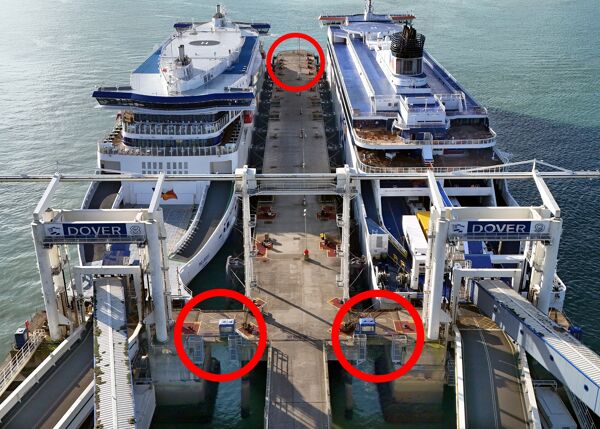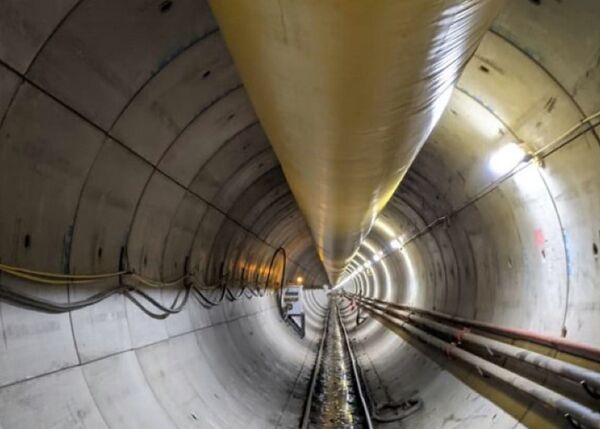
The NEC-procured £675 million Lee tunnel is the deepest ever built under London. Completed in 2017, the 6.9km long, 7.2m internal diameter, 80m deep tunnel transfers sewage from the Abbey Mills pumping station to Europe’s largest wastewater treatment works in Beckton.
The tunnel’s initial function is to intercept, store and transfer 16Mt of combined sewage which used to overflow each year from Abbey Mills to the Thames via the River Lee. In 2023 it will carry 23Mt more sewage from the NEC-procured £2 billion Thames Tideway tunnel, which is being built under the Thames to pick up another 34 sewage outfalls between Acton in west London and Abbey Mills.
Design and construction of the project was awarded to MVB Consortium, a joint venture of Morgan Sindall, Vinci Construction, and Bachy Soletanche, under an NEC3 Engineering and Construction Contract (ECC) Option C (target contract with activity schedule). Project management was undertaken by a CH2M Hill-led team with seconded Thames Water staff, and the contractor’s designers were Mott MacDonald and Underground Professional Services, both engaged under NEC3 Professional Services Contracts (PSC).
Work started in September 2010 with the sinking of four shafts of 20–38m internal diameter and 83–98m deep, using innovative diaphragm walling primary linings and steel-fibre-reinforced slip-formed secondary linings. The tunnel was then built with a 120m long slurry tunnel boring machine through Chalk with groundwater pressures up to 8 bar. In another industry first, the tunnel segmental primary and full-round-shuttered secondary linings were also steel-fibre reinforced.
The project, which included all pumping and control equipment and refurbishment of Joseph Bazalgette’s 1868 pumping station at Abbey Mills, began operation in early 2016. Safety was a primary focus with a resulting very low accident frequency rate of 0.20 and no life-changing injuries over 8.5 million man-hours worked. It won the Major Civil Engineering Project of the Year Award in the 2016 British Construction Industry Awards and Engineering News Record’s 2016 Global Best Project in the water/wastewater category.
Momentum, flexibility and incentivisation
According to former project manager David White, ‘The NEC early warning procedure was invaluable for maintaining delivery momentum on a project of this scale and complexity. It was extensively used by both the project manager and contractor and worked particularly well within the collaborative, co-located project team.’
He says collaborative working was further enhanced midway through the programme by the introduction of ECC secondary option X12 on partnering. ‘At that time, it was considered that employer involvement should increase without impinging on the project manager's independence. Collaborative working could be focused through X12 incentivised key performance indicators to realise efficiency benefits in both the project manager and contractor organisations. In effect, this introduced a secondary gain/pain sharing mechanism and made the project manager a party to the main construction contract target cost gain/pain sharing mechanism.’
White says NEC also proved to be very flexible, particularly when something happened that had not been envisaged by either the project manager or the contractor. ‘Without having sectional completion dates in the contract, a situation arose whereby the employer required a partial and sequenced takeover of part of the works for its own operational needs.
‘Under ECC clause 35.3 the project manager certified a date which the employer took over part of the works within one week of that date. A compensation event in accordance with ECC clause 60.1(15) was then notified and the employer’s risk for the taken-over works was provided for by ECC clause 80.1. This demonstrated the flexibility of NEC at a working level.’
Benefits of using NEC
- NEC processes concentrate on encouraging the parties to share their knowledge to prevent problems occurring in the first place. This is unlike more traditional contracts, which tend to concentrate on allocating blame once they have gone wrong. The early warning procedure and the management of compensation events are prime examples of these processes.
- Unambiguous focus on the accepted programme as an important management document is a further benefit of NEC for all parties.
- Risks that can often lead to disputes and confrontation are dealt with through the NEC ethos of clearly allocating risks and the collaborative working approach then reducing those risks for all the parties so that uncertainty will not arise.
- ECC makes no provision for substantial completion (or practical completion). Completion is defined as when the contractor has done all of the work the works information requires it to do by the completion date and has corrected notified defects that would have prevented the employer from using the works. This results in an unambiguous definition of when completion has been achieved and is supported by the premise that the project manager determines when it has been achieved.
- The management tools and processes set out in NEC contracts support the collaborative working model, which is in turn is underpinned by ECC clause 10.1 on mutual trust and cooperation.



